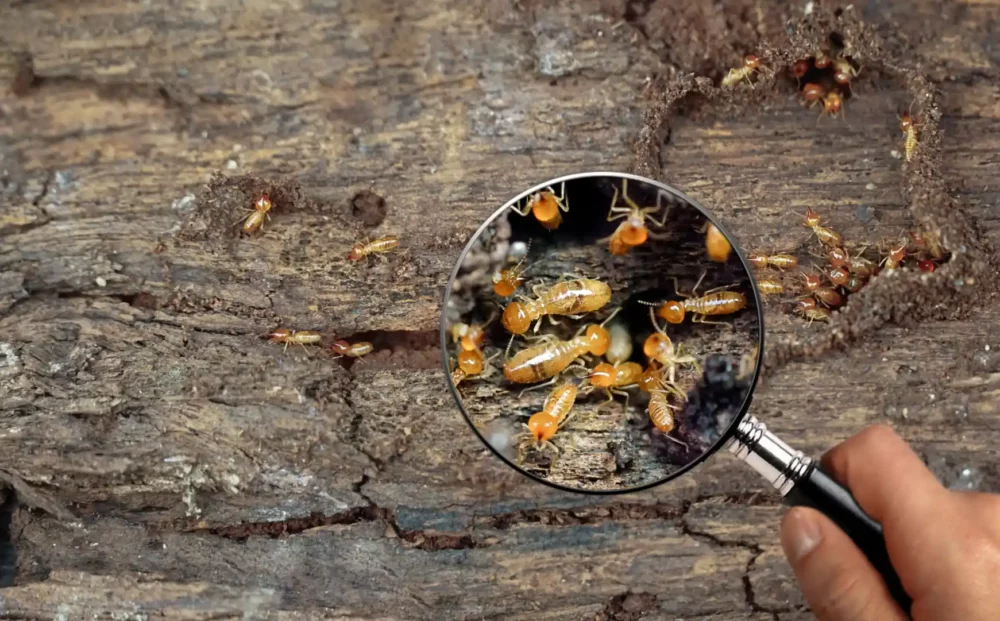Table of Contents
ToggleAlthough drywood termites aren’t as common as their subterranean counterparts, they can nevertheless do significant harm. Common signs of an infestation include shed wings and frass (sawdust piled up from their feeding), and these insects choose to make their nests in dry wood.
Drywood termites, like all other types of termites, eat cellulose, which is contained in wood. The most notable distinction is that, unlike most termites, this species does not prefer soft, moist wood. Instead, they gnaw perpendicular to the wood’s grain, which can cause serious structural damage.
Drywood termites, like most other termites, have a caste system that includes both reproductive and worker/soldier castes. Swarming behavior is a common sign of infestation.
Drywood Termite Habitat
Most instances of drywood termites can be found in tropical regions with mild winters. When compared to other types of termites, these ones can exist without wet soil or water. Since they prefer above-ground wood, infestations usually occur higher up in buildings. Infested wooden furniture or bare wood is a common entry point.
Drywood Termite Behaviors, Threats, or Dangers
The potential damage caused by drywood termites is significant, as they are notoriously destructive due to their stealthy nature and large numbers of swarmers and workers. Engaging the services of a professional termite exterminator is essential for preventing or managing a drywood termite infestation. Learn more about how to get rid of drywood termites to protect your home and property.
How Common Are Drywood Termites in Florida?
Most of the eastern United States is home to the southeastern drywood termite. It is also a common species in the southeast United States, albeit its colonies are often larger than those of the West Indian drywood termite. This species of swarmer measures 7/16 inch (11 mm) in length and has wings that are transparent and a body color range of yellow to brown. The months of May through November are prime swarming months.
West Indian drywood termites are the most common type of termite in the southeastern United States. They are oftentimes called powderpost termites, because their fecal pellets are far smaller than those of regular drywood termites.
The West Indian drywood termite is more mobile than other species of drywood termite because it prefers to attack smaller pieces of furniture, like table legs and picture frames.
The months of April through July are prime time for swarmers, also known as alates. They have semi-translucent brown wings and measure about 3/8 of an inch in length. The heads of these termite soldiers look extremely similar to a burnt match, making them easy to spot.
Most of the eastern United States is home to the southeastern drywood termite. It is also a common species in the southeast United States, albeit its colonies are often larger than those of the West Indian drywood termite.
This species of swarmer measures 7/16 inch (11 mm) in length and has wings that are transparent and a body color range of yellow to brown. The months of May through November are prime swarming months.
Although it is not a native species, the western drywood termite can be discovered in many Southern locations. This species of drywood termite swarms from the end of August to the beginning of November and is the most problematic pest in the western United States.
